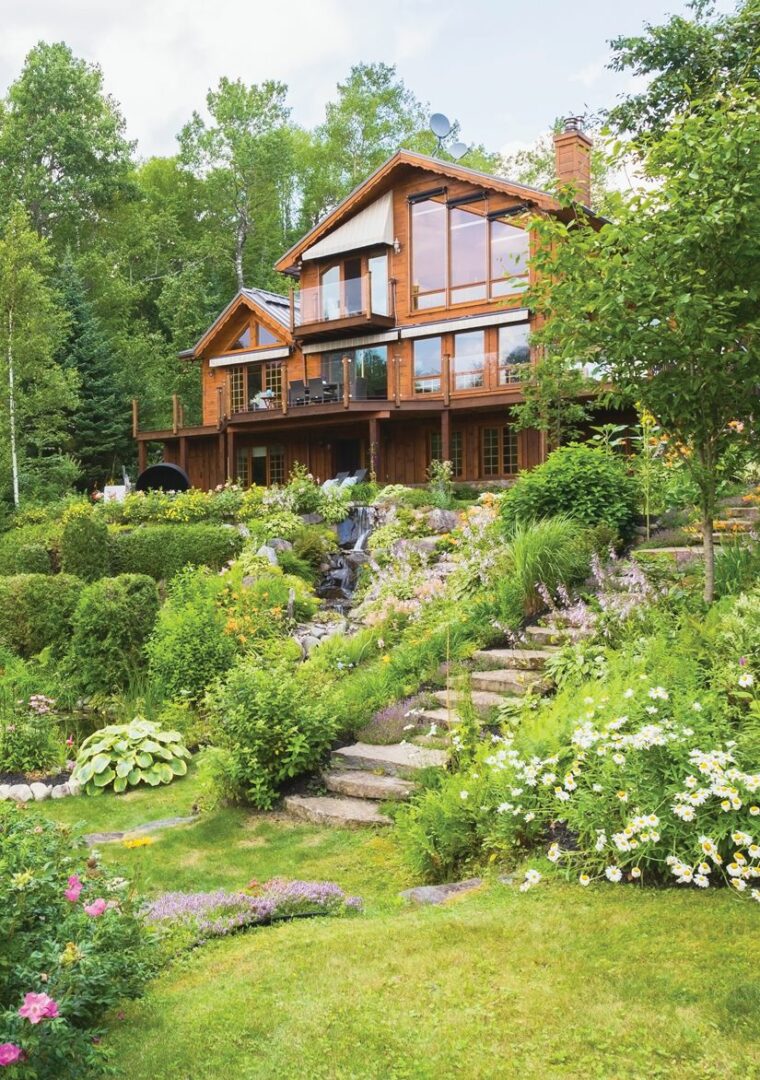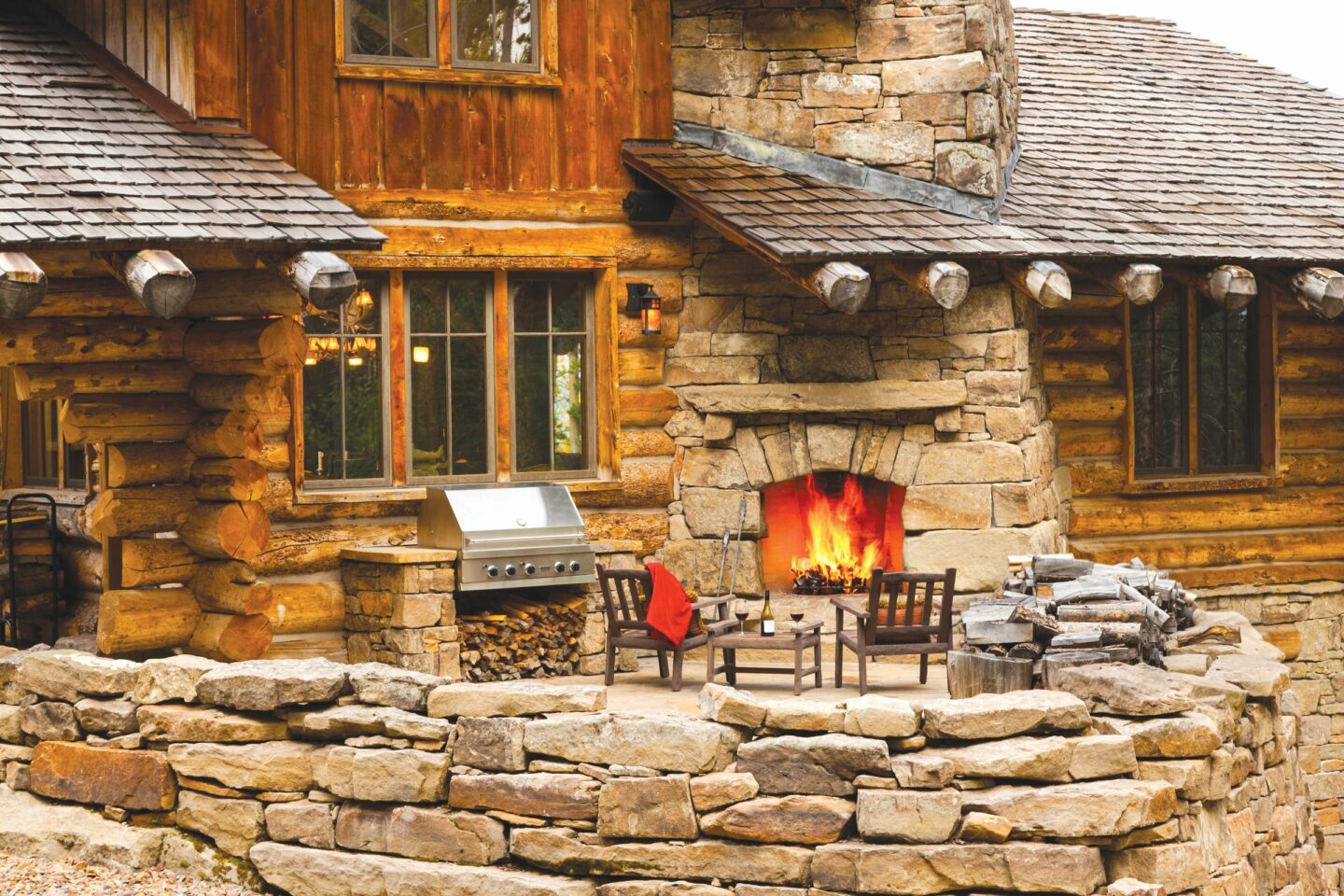Many homeowners who have imagined themselves in a log cabin all their lives are making it a reality.
“People are moving away from densely populated areas,” says Brett Youngstrum, who handles sales for Yellowstone Log Homes, an Idaho manufacturer founded by his grandfather in 1962. “They’re building in the mountains or on a lake—in rural places they see as safer and where they don’t feel ‘locked in’ to a suburban or urban area.”
While Youngstrum says that A-frames are the most popular mountain-home design, he’s finding that other styles of custom plans are more frequently integrating a variety of materials, design features, and construction types.
“There are more complex rooflines like those normally seen in stick-frame homes, and instead of full log exteriors, some are using Hardie board, cedar shakes, or board-and-batten on gables,” Youngstrum says.
Blake Linton, a sales representative with Satterwhite Log Homes, explained that he’s getting more requests this year for floor plans with offices for telecommuting, as well as “mother-in-law suites” so that aging parents can more comfortably share new homes.

“With the low interest rates, we’ve never been busier,” Linton says, adding that the desire to live more simply with loved ones nearby is also influencing style. “The plan starts with a traditional log cabin but trends toward the farmhouse style in its use of construction elements. There are more textures, like stone and stucco, and more drywall interior walls that can be painted for a lighter feel.”
Jeff Clements, vice president of sales for Honest Abe Log Homes, agrees with Linton and Youngstrum.
“There’s a sense of urgency that we’ve never seen before,” Clements says. “Customers come to us, and they don’t want to wait. I think the pandemic has made a lot of people realize they can go ahead and begin living in the kind of home they’ve dreamed about for the future.”
Clements says more young couples than ever are designing wood homes in which they can raise a family, with space for playrooms that can double as classrooms and evolve into craft rooms, guest quarters or additional storage as children grow up.
“There’s an increased desire for hybrids that bring together both timber frame and log components,” Clements says, pointing out that “Use of Structural Insulated Panels (SIP) and log siding creates a home with a traditional exterior appearance while offering more design flexibility inside.”
Matt Franklin, architect with M.T.N Design, the in-house design firm for PrecisionCraft Log & Timber Homes, says there is a shift in the prioritization and allocation of space within the home, with an emphasis on public spaces being multi-functional.
“In the past, we might have seen a living room, family room and rec room,” Matt says. “Now, we are seeing one large great room that can function as all of those spaces. Another trend we are seeing is the inclusion of dedicated, larger and more comfortable office spaces because people need the privacy to work from home.”
Outdoor living spaces are becoming more elaborate, going beyond just the covered barbeque area typically adjacent to an indoor kitchen, according to Franklin.
“Many of our clients are designing a complete outdoor kitchen outside the basement or adjacent to the pool area,” he says. “Convenience and comfort are definitely top priorities.”
Another priority Franklin has observed is what he calls “a growing consciousness in society” about the environment.
“Selecting and building with materials that offer high-performance energy efficiency, whether it is an SIP or high-efficiency mechanical equipment or the use of sustainable resources, are easy ways for the client to do their part,” Franklin says.
Interior Designer Rochelle Zemlak, owner and creative director for Alberta, Canada-based Rochelle Lynne Design, includes nature and the environment in her list of “components of confidence” she believes are influencing design and changing the way people relate to their homes.
“People have discovered a desire for connectivity to things of confidence and security,” Zemlak observes. “We’re finding that in the feeling of history, in the environment, and in our land around us. There’s a return to an appreciation of natural elements.”
Zemlak points out that even those who cannot escape the cities are seeking ways to incorporate nature into their living spaces.
“Our home being connected to our natural environment is really coming back in a big way,” she says. “The popularity of reclaimed and natural wood has grown immensely. It is just amazing what you can do by replacing painted and hard surfaces with natural elements. Stone is good too, but there’s joy and warmth in wood.”

This means the white kitchen, so popular over the past few years, is on its way out.
“The pristine, ethereal, stark space is changing and becoming cozy and enveloping and nourishing for the soul,” Zemlak says, offering the example of cabinetry with doors that are “just a slab of wood, naturally finished with no adornment, celebrated for the wood’s natural beauty.”
Zemlack says that homeowners are drawing on the components of their personal history by choosing interior design and décor that have “cultivated memories of consistency and reliability” that are comforting in uncertain times.
“We’re going through a renaissance of respecting authenticity,” she says. “Things that have age, have story, that are imperfect and show the character of time. Worn items. Recycled items. Things not finished in a manufacturing process but the sense of having had hands on it. You see this a lot in furniture right now. But this is not just true in décor; it’s being reflected in architectural design, as well.”
Zemlack says that 2020 forced the opportunity to understand that “what we surround ourselves with either robs us or nourishes us.”
“Maybe the shift has done us all some good,” she says. “Let’s get there sooner in life.”

